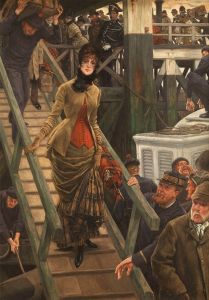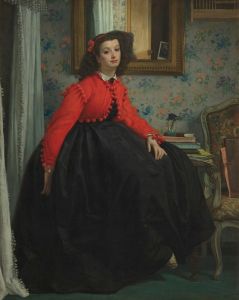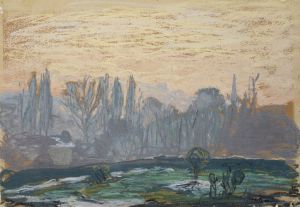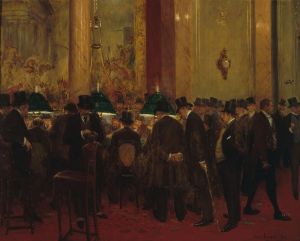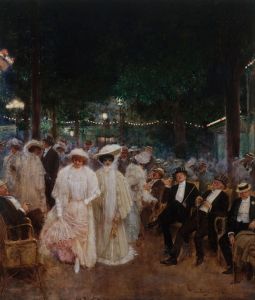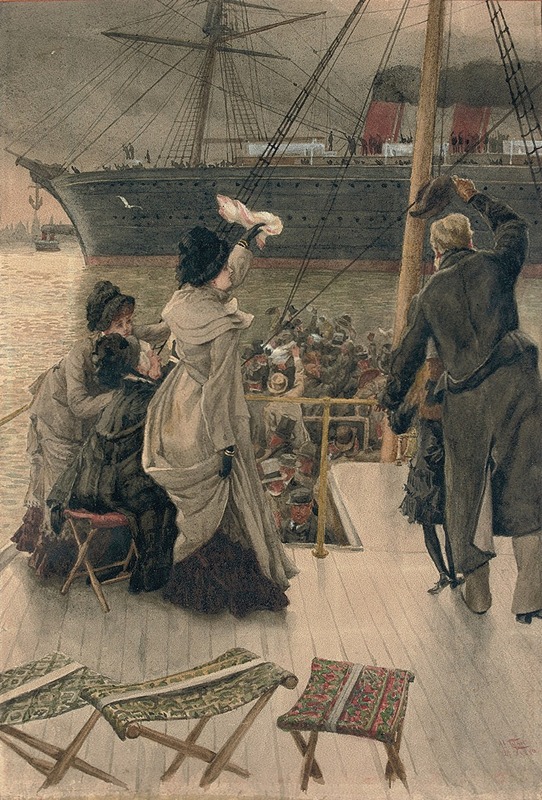
Goodbye, on the Mersey
A hand-painted replica of James Tissot’s masterpiece Goodbye, on the Mersey, meticulously crafted by professional artists to capture the true essence of the original. Each piece is created with museum-quality canvas and rare mineral pigments, carefully painted by experienced artists with delicate brushstrokes and rich, layered colors to perfectly recreate the texture of the original artwork. Unlike machine-printed reproductions, this hand-painted version brings the painting to life, infused with the artist’s emotions and skill in every stroke. Whether for personal collection or home decoration, it instantly elevates the artistic atmosphere of any space.
"Goodbye, on the Mersey" is a painting by the French artist James Tissot, created in the late 19th century. Tissot, born Jacques Joseph Tissot in 1836, was known for his detailed and often narrative-driven paintings, which frequently depicted scenes of contemporary life. His work is characterized by its attention to detail, vibrant use of color, and the ability to capture the nuances of social interactions and emotions.
James Tissot spent a significant portion of his career in England, where he became a prominent figure in the art scene. His move to London in 1871 was partly due to the Franco-Prussian War and the subsequent upheaval in Paris. During his time in England, Tissot developed a keen interest in the social dynamics and fashions of the Victorian era, which is evident in many of his works.
"Goodbye, on the Mersey" is one of Tissot's paintings that reflects his fascination with the themes of departure and separation. The Mersey River, located in the northwest of England, flows through the city of Liverpool, which was a bustling port during the 19th century. The painting captures a poignant moment of farewell, a theme that resonates with the transient nature of life and the emotional weight of parting.
In this painting, Tissot employs his signature style of realism and attention to detail. The figures are dressed in the fashion of the time, showcasing Tissot's interest in contemporary clothing and his ability to render textures and fabrics with precision. The composition of the painting is carefully arranged to draw the viewer's eye to the central figures, emphasizing the emotional core of the scene.
Tissot's use of light and color in "Goodbye, on the Mersey" enhances the mood of the painting. The lighting suggests a specific time of day, possibly late afternoon, which adds to the sense of a fleeting moment. The colors are both vibrant and subdued, reflecting the dual nature of farewells—both the warmth of connection and the melancholy of separation.
The painting is also notable for its depiction of the Mersey River and the surrounding environment. Tissot's attention to the setting provides context for the scene, grounding the emotional narrative in a specific place that would have been familiar to contemporary viewers. The river, a symbol of both connection and division, serves as a fitting backdrop for a painting about departure.
"Goodbye, on the Mersey" is a testament to Tissot's skill as a painter and his ability to convey complex emotions through his art. It remains an important work in his oeuvre, illustrating his mastery of composition, his interest in the social customs of his time, and his ability to capture the subtleties of human experience. The painting continues to be appreciated for its artistic merit and its evocative portrayal of a universal human experience.








